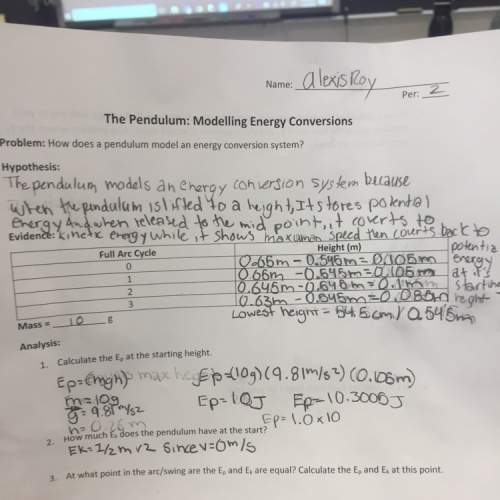
Physics, 19.12.2019 20:31 student679
In rural areas, water is often extracted from underground by pumps. consider an underground water source whose free surface is 60 m below ground level. the water is to be raised 5 m above the ground by a pump. the diameter of the pipe is 10 cm at the inlet and 15 cm at the exit. neglecting any heat interaction with the surroundings and frictional heating effects, determine the power input to the pump required for a steady flow of water at a rate of 15 l/s (=0.015 m3/s)

Answers: 1


Other questions on the subject: Physics


Physics, 22.06.2019 00:00, rickevaaaa
Did the proton move into a region of higher potential or lower potential? did the proton move into a region of higher potential or lower potential? because the proton is a negative charge and it accelerates as it travels, it must be moving from a region of higher potential to a region of lower potential. because the proton is a negative charge and it accelerates as it travels, it must be moving from a region of lower potential to a region of higher potential. because the proton is a positive charge and it slows down as it travels, it must be moving from a region of higher potential to a region of lower potential. because the proton is a positive charge and it slows down as it travels, it must be moving from a region of lower potential to a region of higher potential. request answerpart bwhat was the potential difference that stopped the proton? express your answer with the appropriate units.î”v î” v = nothingnothingrequest answerpart cwhat was the initial kinetic energy of the proton, in electron volts? express your answer in electron volts. ki k i = nothing ev request answerprovide feedback
Answers: 2

Physics, 22.06.2019 01:00, KenzieD7876
Need asap ! what is the relationship between atmospheric pressure and the density of gas particles in an area of increasing pressure? (2 points) as air pressure in an area increases, the density of the gas particles in that area decreases. as air pressure in an area increases, the density of the gas particles in that area increases. as air pressure in an area increases, the density of the gas particles in that area remains constant. as air pressure in an area increases, the density of the gas particles in that area increases and decreases in an alternating pattern. 3. which of the following correctly describes a way in which earth's atmosphere interacts with the geosphere? (2 points) it contains gases that living organisms breathe. it contains gases that trap incoming solar radiation. it provides a medium for cycles that provide nutrients to living organisms. it provides a medium for water to move between earth's surface and the air. 4. which of the following is considered a drawback to using wind energy as a source of power? (2 points) wind energy is nonrenewable. wind energy produces large amounts of air pollution. 5. a meteorologist predicts that the weather in a region will soon change from clear skies to probable thunderstorms. prior to making this prediction, what did the meteorologist most likely observe on a barometer? (2 points) the barometer fell slightly. the barometer fell substantially. the barometer rose slightly. the barometer rose substantially. 6. which of the following do meteorologists not typically use weather balloons to record? (2 points) atmospheric pressure cloud types humidity temperature 7. during which step in the can crush lab did water vapor force air from the can? (2 points) the can was filled nearly to the top with water. the can was placed on the hot stove top burner for several minutes. the can was removed from the hot stove top burner. the can was placed upside-down in the water-filled pan.
Answers: 2

Physics, 22.06.2019 01:00, anna4060
First, launch the video below. you will be asked to use your knowledge of physics to predict the outcome of an experiment. then, close the video window and answer the question at right. you can watch the video again at any point. part a as in the video, we apply a charge +q to the half-shell that carries the electroscope. this time, we also apply a charge –q to the other half-shell. when we bring the two halves together, we observe that the electroscope discharges, just as in the video. what does the electroscope needle do when you separate the two half-shells again? view available hint(s) as in the video, we apply a charge + to the half-shell that carries the electroscope. this time, we also apply a charge – to the other half-shell. when we bring the two halves together, we observe that the electroscope discharges, just as in the video. what does the electroscope needle do when you separate the two half-shells again? it deflects more than it did at the end of the video. it deflects the same amount as at end of the video. it does not deflect at all. it deflects less than it did at the end of the video. submit
Answers: 2
You know the right answer?
In rural areas, water is often extracted from underground by pumps. consider an underground water so...
Questions in other subjects:








Mathematics, 19.12.2019 01:31


History, 19.12.2019 01:31












